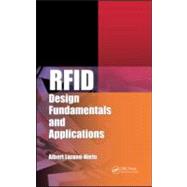- ISBN: 9781420091250 | 1420091255
- Cover: Hardcover
- Copyright: 10/21/2010
RFID is an increasingly pervasive tool that is now used in a wide range of fields. It is employed to substantiate adherence to food preservation and safety standards, combat the circulation of counterfeit pharmaceuticals, and verify authenticity and history of critical parts used in aircraft and other machinery'”and these are just a few of its uses.Goes beyond deployment, focusing on exactly how RFID actually worksRFID Design Fundamentals and Applications systematically explores the fundamental principles involved in the design and characterization of RFID technologies. The RFID market is exploding. With new and enhanced applications becoming increasingly integral to government and industrial chain supply and logistics around the globe, professionals must be proficient in the evaluation and deployment of these systems. Although manufacturers provide complete and extensive documentation of each individual RFID component, it can be difficult to synthesize and apply this complex information'”and users often must consult and integrate data from several producers for different components.This book covers topics including:Types of antennas used in transpondersComponents of the transponder, memory structure and logic circuitsAntennae for RFID interrogatorsTypes of modulationOrganization and characteristics of commercial transpondersCommunication linksModes of operation for transponders operating at different frequenciesPrinciples of arbitration and anti-collisionCommands used by transpondersThis powerful reference helps to resolve this dilemma by compiling a systematic overview of the different parts that make up the whole RFID system, helping the reader develop a clear and understanding of its mechanisms and how the technology actually works. Most books on RFID focus on commercial use and deployment of the technology, but this volume takes a different and extremely useful approach. Directed toward both professionals and students in electronics, telecommunications, and new technologies, it fills the informational void left by other books, illustrating specific examples of available semiconductors and integrated circuits to clearly explain how RFID systems are configured, how they work, and how different system components interact with each other.







